Africa is not only home to jungles, savannas, deserts, and rich wildlife endemic to the continent. It also boasts a wide collection of lakes, and the largest of them ranks as the second-largest freshwater lake in the entire world. If North America has the Great Lakes, Africa also has its version of deep lakes that may not be as vast as the North American Great Lakes but are surely as magnificent. But apart from that, there are many other lakes in the area that lie undiscovered. This article will explore 15 of the largest lakes in Africa, ranked from biggest to smallest.
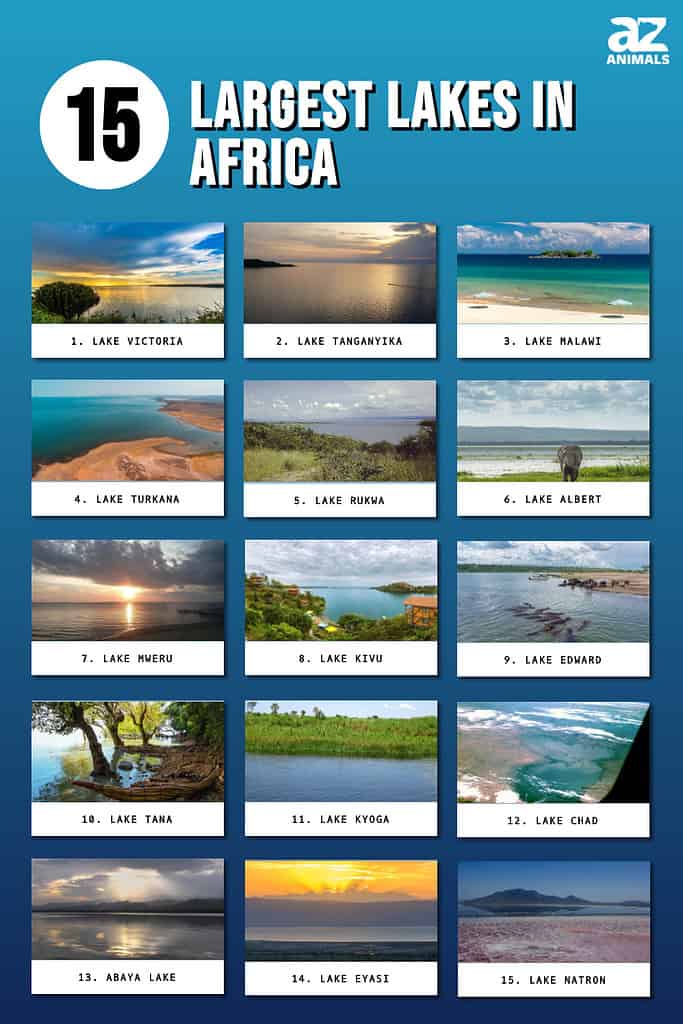
The 15 Largest Lakes in Africa
1. Lake Victoria, Uganda/Kenya/Tanzania
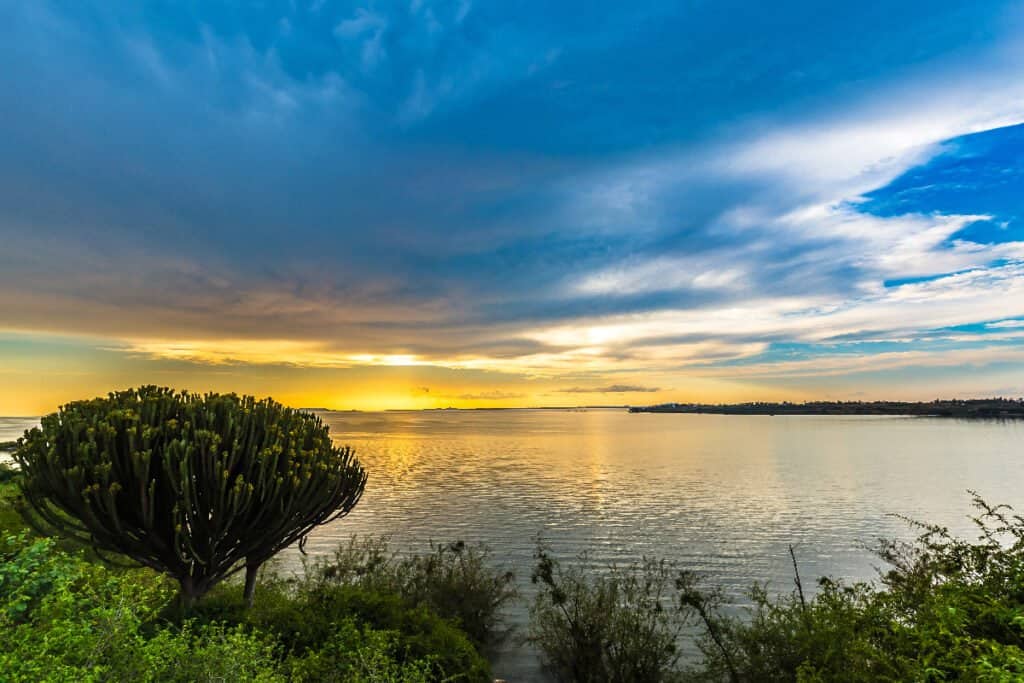
With a surface area of 23,146 square miles, Lake Victoria is the largest lake in
Africa
.
©Stefan Haider/Shutterstock.com
Lake Victoria sits as the largest lake on the African continent. It encompasses a surface area of 23,146 sq mi or 59,947 sq km. Covering this vast space, the lake is also the world’s biggest tropical lake. It seconds Lake Superior’s size when it comes to the largest freshwater lakes in the world. The lake receives most of its water from rainfall with only one outlet through the Nile River. It was named after Queen Victoria by explorer John Hanning Speke, the first man to document the lake in 1858. With a volume of 2,424 cubic kilometers and a maximum depth of 276 feet or 84 meters, Lake Victoria holds the ninth spot as the largest lake in the world by volume. It touches three African countries, namely Kenya, Tanzania, and Uganda. Due to its size and extensive shoreline, including islands claiming 3.7% of its entire shoreline, the lake hosts diverse fish species endemic to the area. Some fish that only inhabit Lake Victoria include cichlids, Nile perch, and more.
2. Lake Tanganyika, Tanzania/Democratic Republic of the Congo/Burundi/Zambia
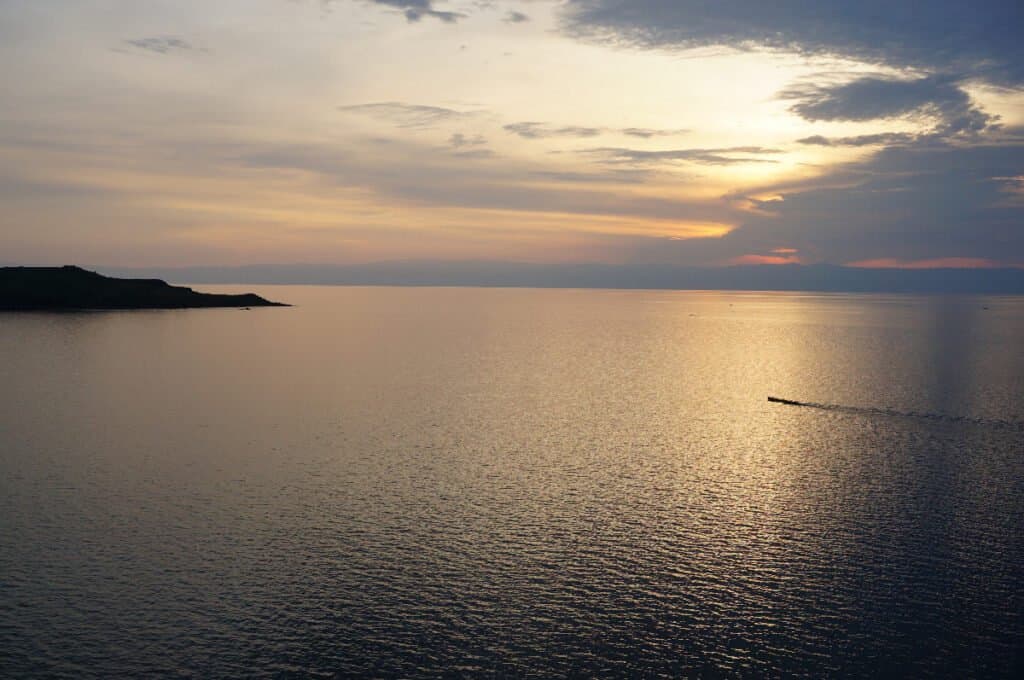
Lake Tanganyika is the second-largest lake in Africa.
©Naoki Kakuta/Shutterstock.com
Crossing four African countries, namely, Tanzania, Zambia, Burundi, and the Democratic Republic of the Congo, Lake Tanganyika is the second-largest lake in the continent and the second-deepest lake in the world, next to Russia‘s Lake Baikal. The lake covers a total surface area of 12,700 sq mi or 32,900 sq km. Lake Tanganyika has a 1,136 mi or 1,828 km shoreline, making it the longest freshwater lake globally. With a maximum depth of 4,826 feet or 1,471 meters, it looks more like a strait from afar and a trench within. Apart from all the titles it already holds, Lake Tanganyika is also one of the oldest lakes, estimated at 10 million years old. There are less than 20 ancient lakes globally, and the lake’s age makes it one of them. Despite the lake’s exceptionally long and narrow geography, it amazingly provides a home to about 18% of the world’s freshwater fish and other marine animals, including sponges, sardines, and jellyfish that are only found in the lake. The lake’s rich biodiversity feeds approximately 10 million people settling around Lake Tanganyika.
3. Lake Malawi, Mozambique/Tanzania
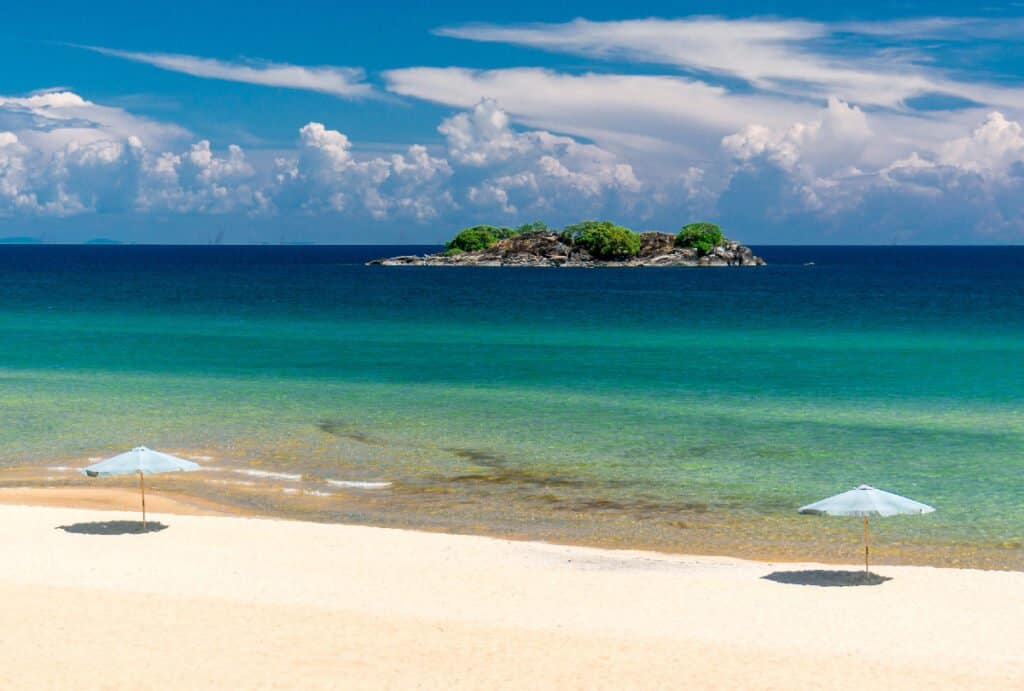
With a depth of 2316 feet, Lake Malawi is the 6th deepest lake in the world.
©Scott Biales DitchTheMap/Shutterstock.com
Commonly called Lake Nyasa, Lake Malawi covers 11,400 sq mi or 29,600 sq km. Like Lake Tanganyika, it is a long and narrow lake with deep depths. Measuring a depth of 2,316 feet or 706 meters, Lake Tanganyika ranks as the world’s 6th deepest lake. It is also an old lake, formed 1-2 million years ago. This trench-like lake extends across two African countries – Mozambique and Tanzania. Despite the lake’s depth, it sports crystal-clear waters with maximum underwater visibility of 20 meters on a cloudless day. Lake Malawi shares many features with Lake Tanganyika, but apart from their geographical similarities, Lake Malawi also hosts an extraordinarily abundant ecosystem where thousands of fish species are found. About 15% of the Earth’s freshwater marine species inhabit the lake.
4. Lake Turkana, Kenya
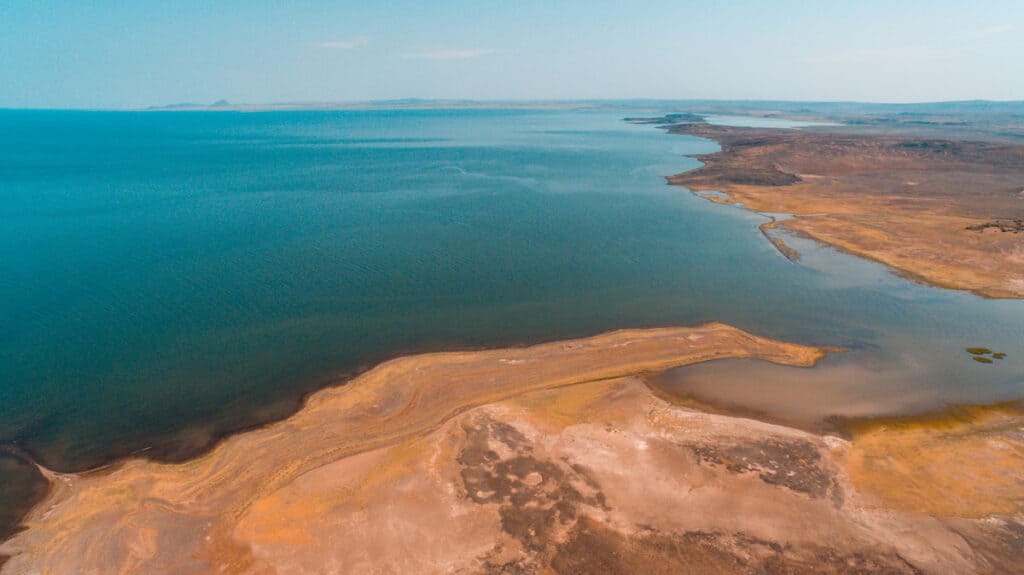
Lake Turkana is the world’s largest alkaline lake.
©MOIZ HUSEIN STORYTELLER/Shutterstock.com
Formerly known as Lake Rudolf, Lake Turkana is located in the Kenyan Rift Valley in Kenya and crosses into Ethiopia at its northern end. Lake Turkana has a total surface area of 2,473 sq mi or 6,405 sq km, making it the world’s largest permanent desert lake and the world’s largest alkaline lake. It is nicknamed the “Jade Sea” because of its stunning turquoise color. As a desert lake and an alkaline lake, Lake Turkana is generally shallow and salty due to its high concentration of dissolved salt minerals. Lake Turkana also holds the number 4 spot on the largest salt lakes in the world by water volume. While the waters in Lake Turkana have commonly been used as drinking water, their salinity level and high fluoride levels make it unsuitable. Despite Lake Turkana’s salinity, it is still home to many fish species and other land animals like crocodiles, hippos, and hundreds of bird species endemic to Kenya. Lake Turkana also has its species of mud turtle that cannot be found anywhere else in the world.
5. Lake Rukwa, Tanzania

By surface area, Lake Rukwa is the fifth largest lake in Africa.
©Lichinga / Creative Commons – License
Encompassing 2,220 sq mi or 5,760 sq km, Lake Rukwa is the fifth largest lake in Africa by surface area. However, Lake Rukwa’s size sometimes varies, making it switch and turn positions with Lake Albert in the continent’s largest lakes list. Located in Tanzania, the lake often experiences fluctuations in surface size because of the varying inflow of seasonal streams, the lake’s main source of water. In 2016, 1.53 billion cubic meters, or 54.2 billion cubic feet of helium gas was discovered in Lake Rukwa.
6. Lake Albert, Uganda/the Democratic Republic of the Congo
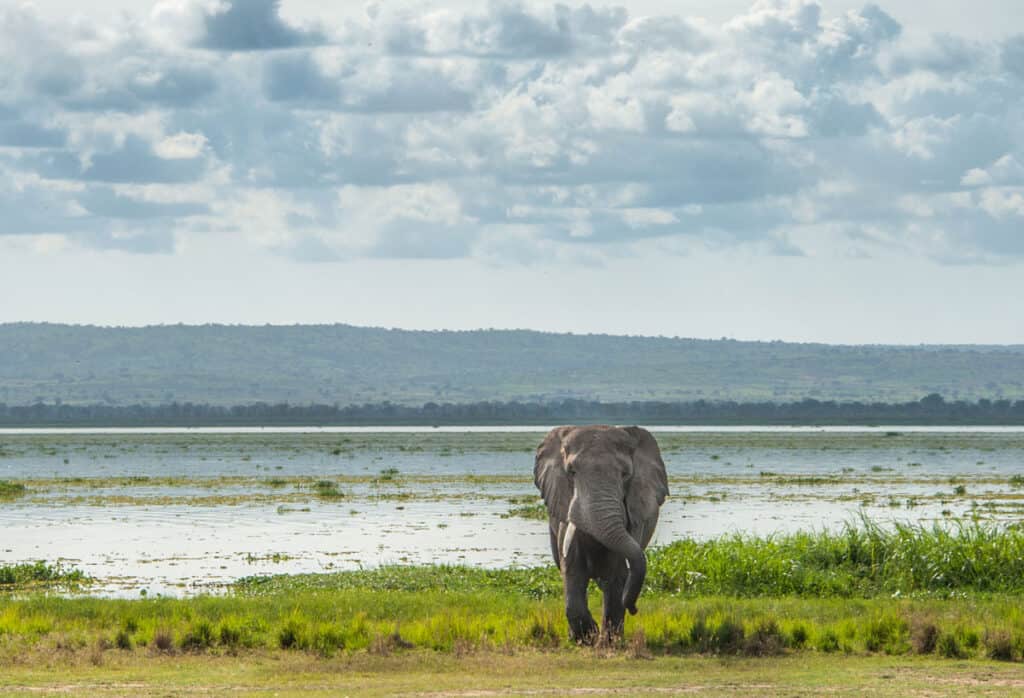
The sixth largest lake in Africa is Lake Albert.
©iStock.com/Brina Bunt
Lake Albert doesn’t have a lot of tourists visiting its area because of the steep mountains surrounding it. However, those resilient and dedicated enough to come through will be rewarded by a magnificent sight. Encompassing a surface area of 2,046 sq mi or 5,300 sq km, Lake Albert ranks as the sixth largest lake in Africa. Formerly known as Lake Mwitanzige and Lake Mobutu Sese Seko, one of Uganda’s biggest Great Lakes is located between Uganda and the Democratic Republic of Congo. The lake is one of the most significant sources of the White Nile River waters. Lake Albert’s 82-foot-deep basin is relatively shallow compared to other African lakes, with its deepest point lying at 167 feet down.
7. Lake Mweru, Zambia/the Democratic Republic of the Congo
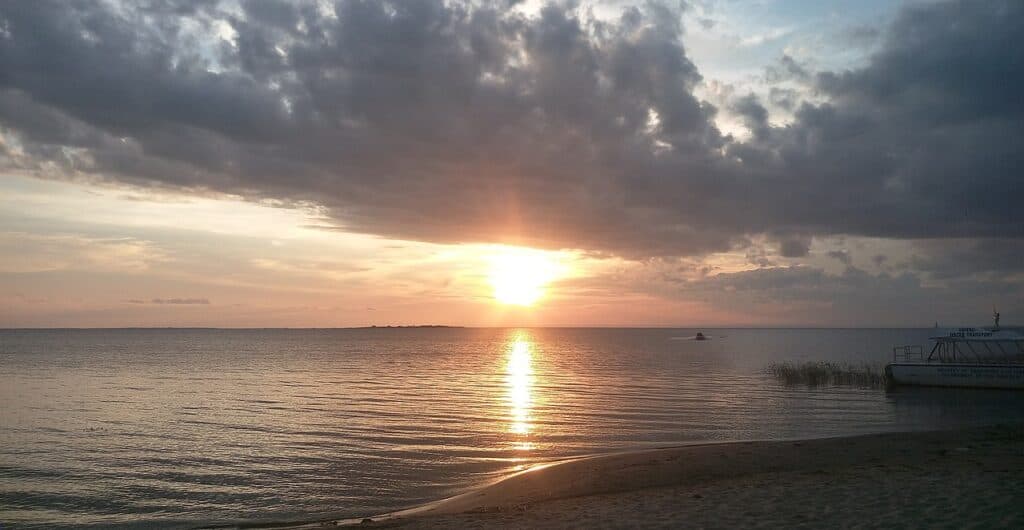
Lake Mweru is known for its longfin tilapia.
©Makandwe Mwape / Creative Commons – License
Covering a surface area of 1,976 sq mi or 5,120 sq km, Lake Mweru is one of Africa’s largest lakes. It is located on the border that separates Zambia and the Republic of Congo. The Luapula River primarily feeds Lake Mweru via swamps coming from the south. Next to Lake Albert, it is the second-largest lake touching Congo and is situated 93 miles west of the massive Lake Tanganyika. The lake hosts several fishing villages. There are three inhabited islands within the lake, which also provide more opportunities for fishing. Lake Mweru is well-known for its longfin tilapia, a popular merchandise in the country’s markets. Other species of fish that can be caught around the lake include catfish, elephant fish, carp, and tigerfish.
8. Lake Kivu, Rwanda/Democratic Republic of the Congo
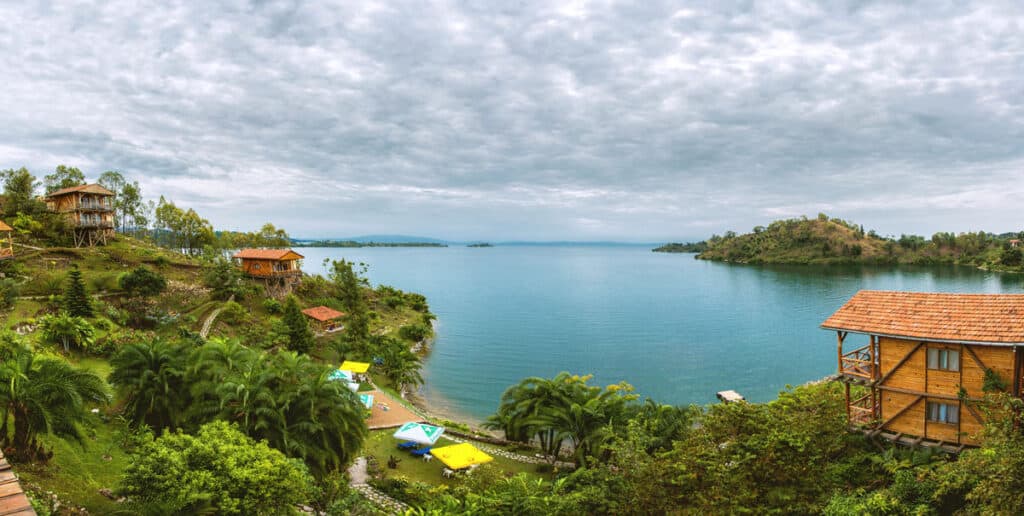
Though its exact surface area is hard to measure, Lake Kivu is estimated to cover 1040 square miles.
©iStock.com/caglarmogultay
Lake Kivu borders Congo and Rwanda in Africa. Due to its irregular shape, its exact surface area is difficult to measure. Still, it is estimated to cover approximately 1,040 sq mi or 2,700 sq km, making it the continent’s 8th largest lake. With a maximum depth of 722 feet or 220 meters, it is the 19th deepest lake in the entire world. It is situated on a rift valley slowly being pulled apart, resulting in volcanic activity around the lake’s basin.
9. Lake Edward, Uganda
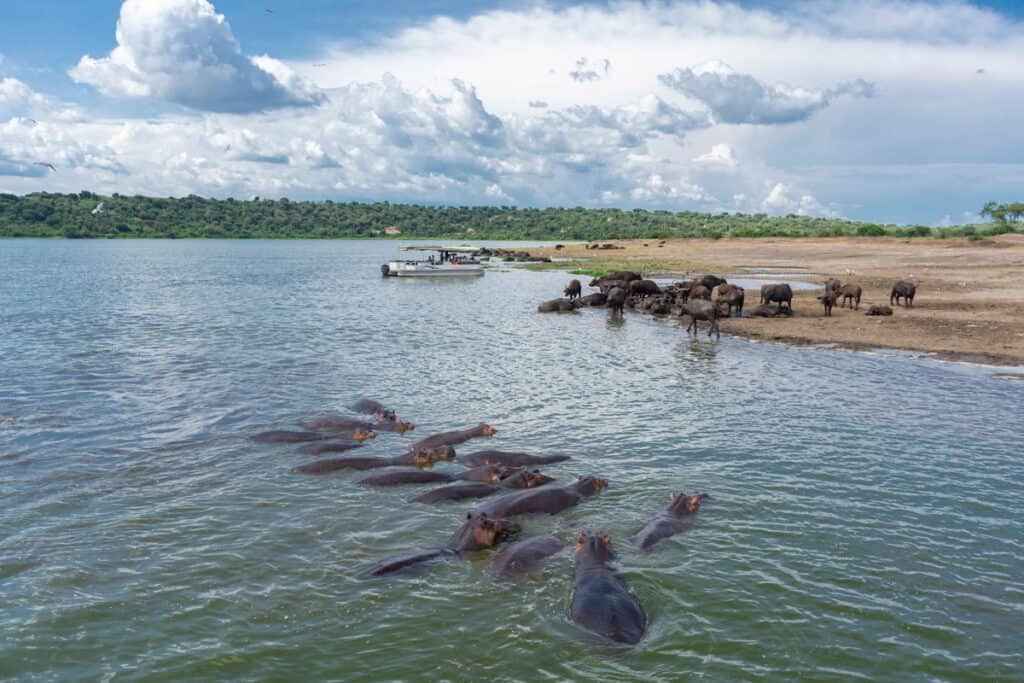
Lake Edward is one of the smallest African Great Lakes and the 9th largest in Africa.
©Arnold Mugasha/Shutterstock.com
Covering a surface area of 897 sq mi or 2,325 sq km, Lake Edward makes it to the top ten largest lakes in Africa but one of the smallest among the African Great Lakes. It is another lake that sits between Uganda and Congo. Five rivers feed the lake, which lies at 3,020 feet or 920 meters. The lake’s area has shown evidence of volcanic activities for thousands of years. It is home to fish species and land animals, including chimpanzees, elephants, crocodiles, and lions.
10. Lake Tana, Ethiopia
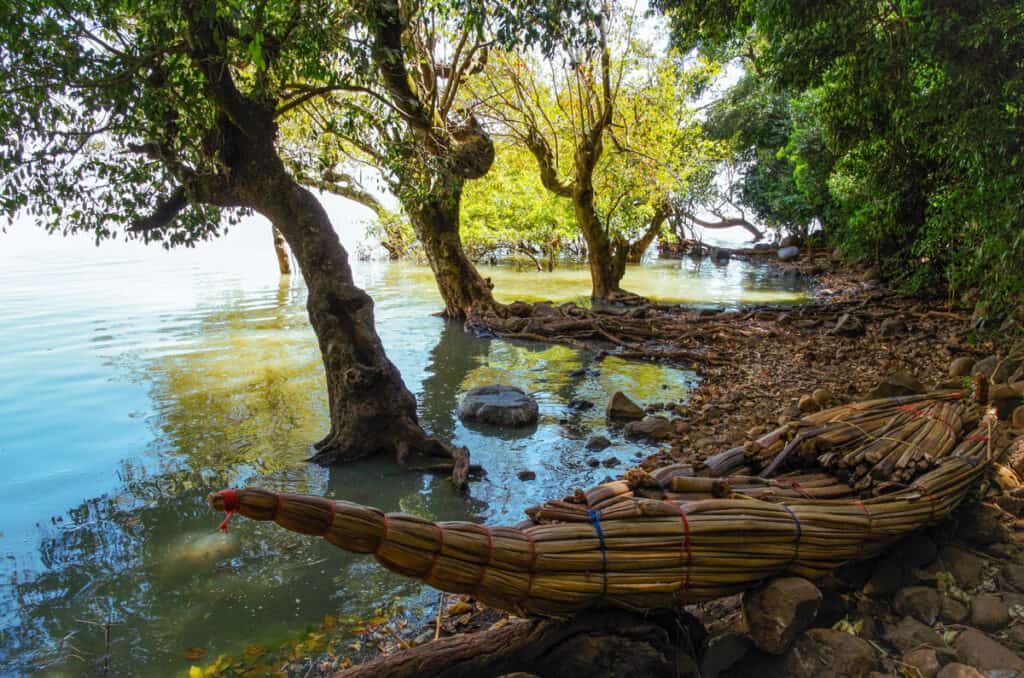
Lake Tana sits at an elevation of 5,866 feet.
©iStock.com/undefined undefined
Reigning as the largest lake in Ethiopia, Lake Tana is also the source of Blue Nile waters. Its surface area expands to 832 sq mi or 2,156 sq km. As it is located in the Ethiopian Highlands, the lake sits at an elevation of 5,866 feet or 1,788 meters above sea level. In 2015, the lake was recognized internationally for its natural and cultural importance.
Here are the runner-ups in the list of the biggest lakes in Africa:
11. Lake Kyoga, Central Uganda – 644 sq mi or 1,720 sq km
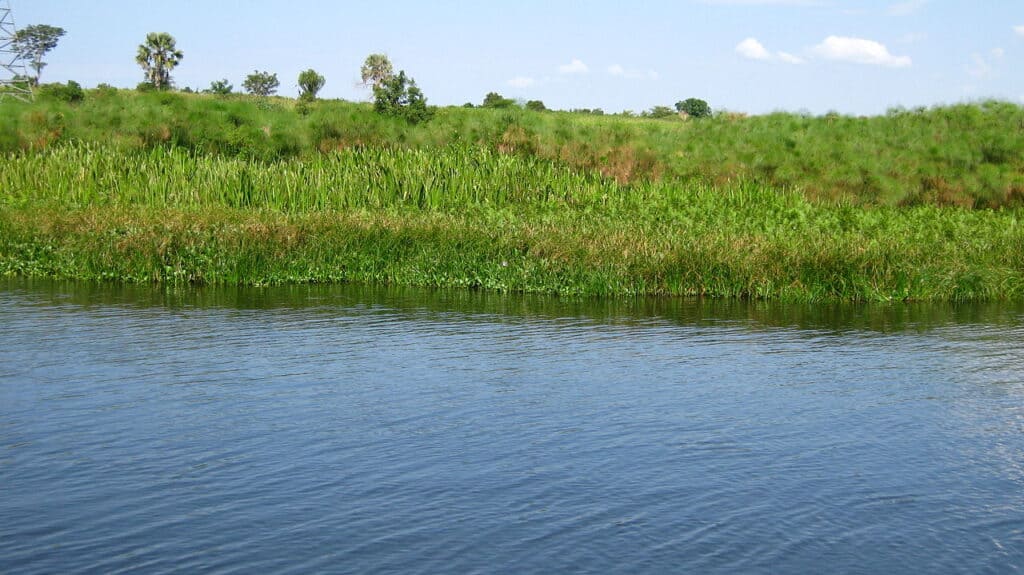
©Joanne Mumbey (https://www.flickr.com/photos/uspyeh/) / Creative Commons – License
12. Lake Chad, Chad Nigeria, Cameroon, Niger – 521 sq mi or 1,350 sq km

©NASA / This file is in the public domain in the United States because it was solely created by NASA. NASA copyright policy states that “NASA material is not protected by copyright unless noted”. (See Template:PD-USGov, NASA copyright policy page or JPL Image Use Policy.) – License
13. Abaya Lake, Ethiopia – 448 sq mi or 1,162 sq km

©Rod Waddington / flickr – License
14. Lake Eyasi, Northern Tanzania – 405 sq mi or 1,050 sq km

©Gabor Kovacs Photography/Shutterstock.com
15. Lake Natron, Great Rift Vally, Tanzania – 401 sq mi or 1,040 sq km
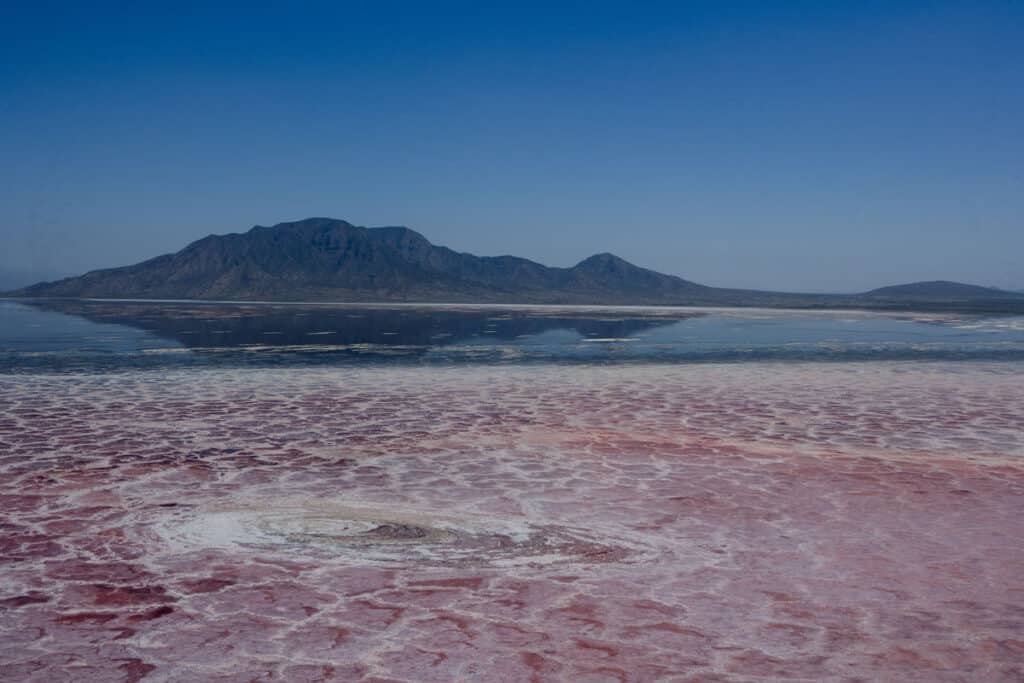
©iStock.com/Mario Faubert
Summary Of The 15 Largest Lakes In Africa
| Rank | Lake | Size in Square Miles |
|---|---|---|
| 1 | Lake Victoria, Uganda/Kenya/Tanzania | 23,146 |
| 2 | Lake Tanganyika, Tanzania/Democratic Republic of the Congo/Burundi/Zambia | 12,700 |
| 3 | Lake Malawi, Mozambique/Tanzania | 11,400 |
| 4 | Lake Turkana, Kenya | 2,473 |
| 5 | Lake Rukwa, Tanzania | 2,220 |
| 6 | Lake Albert, Uganda/the Democratic Republic of the Congo | 2,046 |
| 7 | Lake Mweru, Zambia/the Democratic Republic of the Congo | 1,976 |
| 8 | Lake Mweru, Zambia/the Democratic Republic of the Congo | 1,040 |
| 9 | Lake Edward, Uganda | 897 |
| 10 | Lake Tana, Ethiopia | 832 |
| 11 | Lake Kyoga, central Uganda | 644 |
| 12 | Lake Chad, parts of Chad, Niger and Cameroon, and northeast Nigeria | 521 |
| 13 | Abaya Lake, Ethiopia | 448 |
| 14 | Lake Eyasi, northern Tanzania | 405 |
| 15 | Lake Natron, northern Tanzania | 401 |
The photo featured at the top of this post is © iStock.com/Brina Bunt
Thank you for reading! Have some feedback for us? Contact the AZ Animals editorial team.







